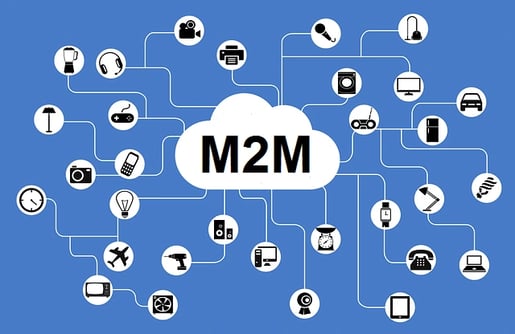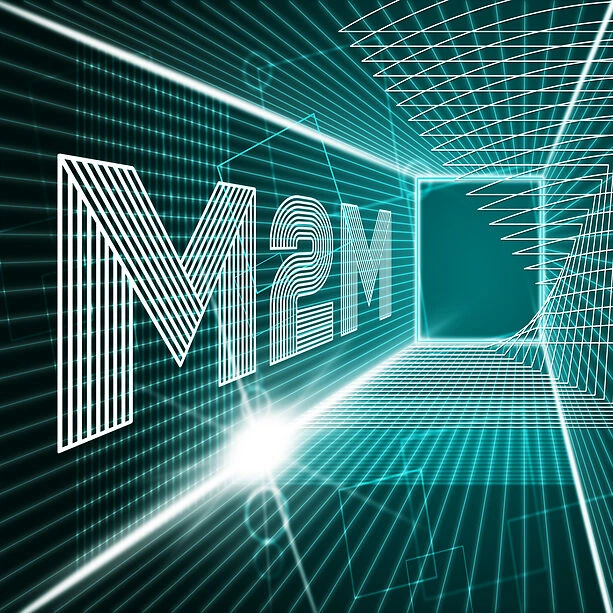Machine-to-machine (M2M) communication refers to the transfer of data between two machines through a wired or wireless connection, without relying on human input. This communication occurs when a machine uses sensors to transmit data to another machine or a network of machines. M2M is an umbrella term for the Internet of Things (IoT), IoT refers to the connection and exchange of information between various devices.

How Does M2M Work?
M2M communication uses sensors to transfer data to another machine or network of machines to quickly distribute information. Sensors are strategically placed to receive and transmit data in real-time.
The defining factor of M2M is that data transfer is completed without human input or interference. That being said, M2M requires an initial human setup to dictate where, when, and how data transfer takes place between machines. Once M2M communication is set up, data transfer is completed automatically.
M2M has many uses such as reducing equipment maintenance and increasing the ability to monitor equipment usage and location. These benefits allow for a monitoring system that requires less time and money to maintain.
Join the AirFinder Difference!
- Innovation. Organizations can be freed up to innovate and bring more impactful products and services to market.
- Profitability. Increased profitability provides new opportunities to innovate and improve valuation.
- Digital Transformation. Discover competitive advantages, new revenue opportunities, improved customer relationships and increased efficiency.
Wired M2M vs. Wireless M2M
M2M communication can utilize either wired or wireless communication methods to facilitate data transfer. Depending on the communication channel M2M utilizes, instances of M2M communication can be referred to as either “wired M2M” or “wireless M2M.”
Wired M2M communication is often facilitated by telephone lines, coaxial cables, fiber optic cables, or simply physical wiring between the devices that are communicating. Wireless M2M communication, on the other hand, is most often facilitated by radio waves (as with RFID), WiFi, or cellular networks.
M2M vs. IoT
With the popularization of modern cloud computing, M2M communication tends to be overshadowed by the Internet of Things (IoT). IoT refers to physical devices interconnected through software connectivity. There is some division as to how IoT is related to M2M. Some say that IoT is a subset of M2M, while others say it is a separate concept that builds upon the basis and technology of M2M.
Regardless, M2M and IoT heavily overlap in terms of both usage and technological basis. Their differences are semantic. M2M is centered around hardware and point-to-point communication. IoT utilizes cloud communication and constructs larger interconnected networks with help of internet-based platforms. In other words, the difference lies within methods of communication between machines. IoT connection stems from cloud-based software, while M2M usually connotes a point-to-point communication pattern between hardware components.
Essentially, IoT is an iteration of M2M that utilizes modern technology to improve upon an already-existing concept. IoT is used privately for smart home devices and wearables and in professional spheres such as manufacturing, healthcare, and logistics.
Conclusion
By facilitating communication between machines automatically, M2M communication reduces maintenance costs of equipment and increases efficiency in data transfer. It is this technology that has led to the modern concept of IoT, which relies on cloud computing. To learn more about professional use cases of M2M and IoT solutions, or to see how these solutions could work for you, request more information today!





